
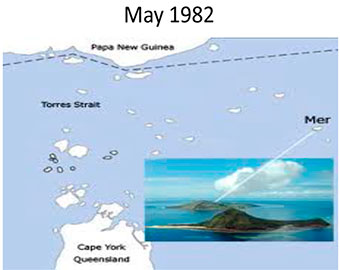 May 1982
May 1982
Lets start then in May 1982 when Eddie Mabo and four other Meriam people of the Murray Islands in the Torres Strait began an action in the High Court of Australia seeking confirmation of their traditional land rights.
They claimed that Murray Island (Mer) and surrounding islands and reefs had been continuously inhabited and exclusively possessed by the Meriam people who lived in permanent communities with their own social and political organisation.
They conceded that the British Crown in the form of the colony of Queensland became sovereign of the islands when they were annexed in 1879.
Nevertheless they claimed continued enjoyment of their land rights and that these had not been validly extinguished by the sovereign.
They sought recognition of these continuing rights from the Australian legal system. The case was heard over ten years through both the High Court and the Queensland Supreme Court.
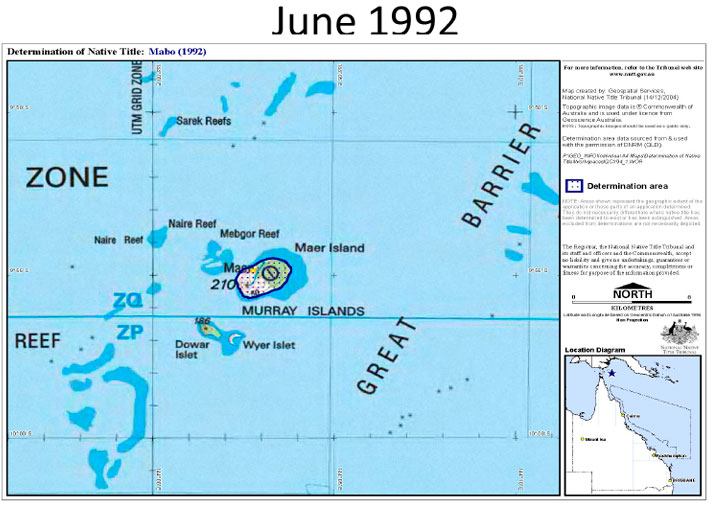
June 1992
On 3 June 1992, the High Court by a majority of six to one upheld the claim and ruled that the lands of this continent were not terra nullius or land belonging to no-one when European settlement occurred, and that the Meriam people were “entitled as against the whole world to possession, occupation, use and enjoyment of (most of) the lands of the Murray Islands”.
The decision struck down the doctrine that Australia was terra nullius – a land belonging to no-one.
The High Court judgment found that native title rights survived settlement, though subject to the sovereignty of the Crown. The judgment contained statements to the effect that it could not perpetuate a view of the common law which is unjust, does not respect all Australians as equal before the law, is out of step with international human rights norms, and is inconsistent with historical reality.
The High Court recognised the fact that Aboriginal people had lived in Australia for thousands of years and enjoyed rights to their land according to their own laws and customs. They had been dispossessed of their lands piece by piece as the colony grew and that very dispossession underwrote the development of Australia into a nation.
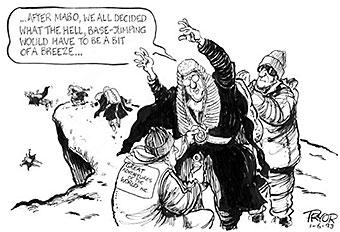 The decision was attacked by some commentators as being a High Court “adventure”.
The decision was attacked by some commentators as being a High Court “adventure”.
But it was defended by then Chief Justice Mason in the following terms:
Far from being an adventure on the part of the High Court, the decision reflects what’s happened in the great common law jurisdictions of the world and in the International Court, except that in Australia it’s happened later than it’s happened anywhere else.
Mason A, “Putting Mabo in Perspective” (1993) Australian Lawyer 23, at 23
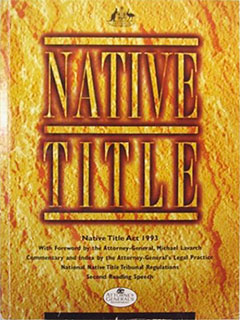 The Native Title Act 1993 was part of the Commonwealth Government’s response to the 1992 Mabo decision.
The Native Title Act 1993 was part of the Commonwealth Government’s response to the 1992 Mabo decision.
The Act came into operation on 1 July 1994.
It provided for a systematic legal framework to deal with matters affecting native title. The Act favoured resolution of native title matters by agreement.
Mabo v Queensland No 2 (1992) 175 CLR 1 at [83] per Brennan J
Native title to particular land (whether classified by the common law as proprietory, or otherwise), its incidents and the persons entitled thereto are ascertained according to the laws and customs of the indigenous people who, by those laws and customs, have a connection with the land.
Native Title Act 1993 (Cth) S223(1)
Common law rights and interests
223(1) The expression native title or native title rights and interests means the communal, group or individual rights and interests of Aboriginal peoples or Torres Strait Islanders in relation to land or waters, where:
(a) the rights and interests are possessed under the traditional laws acknowledged, and the traditional customs observed, by the Aboriginal peoples or Torres Strait Islanders; and
(b) the Aboriginal peoples or Torres Strait Islanders, by those laws and customs, have a connection with the land or waters; and
(c) the rights and interests are recognised by the common law of Australia.
Where native title can exist
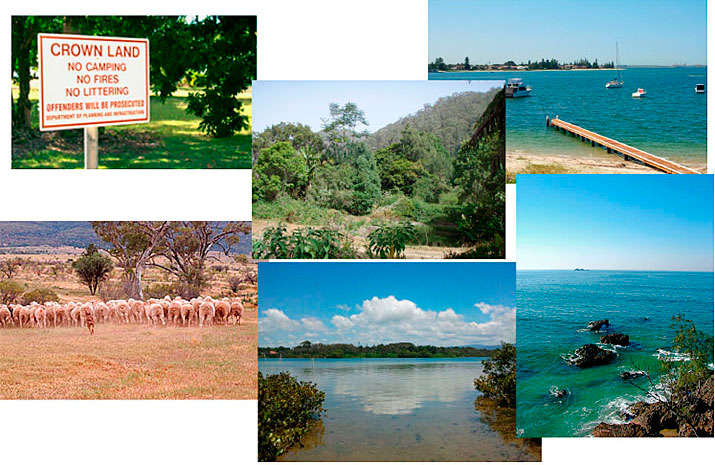
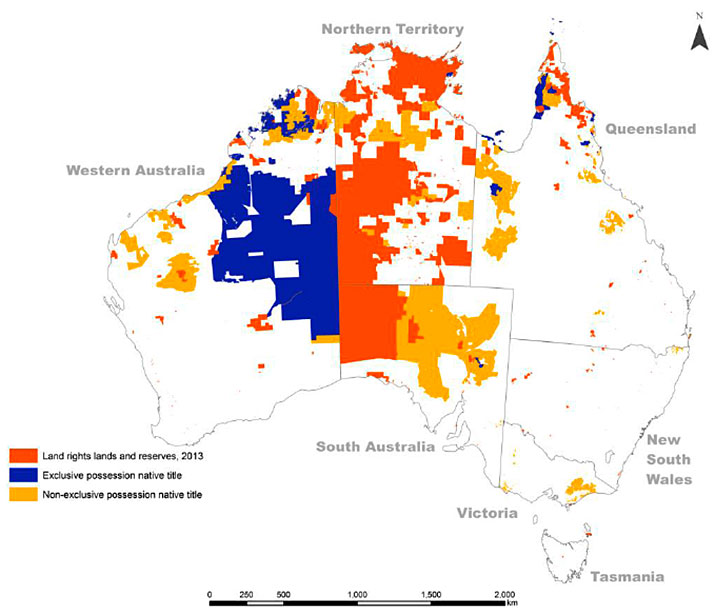
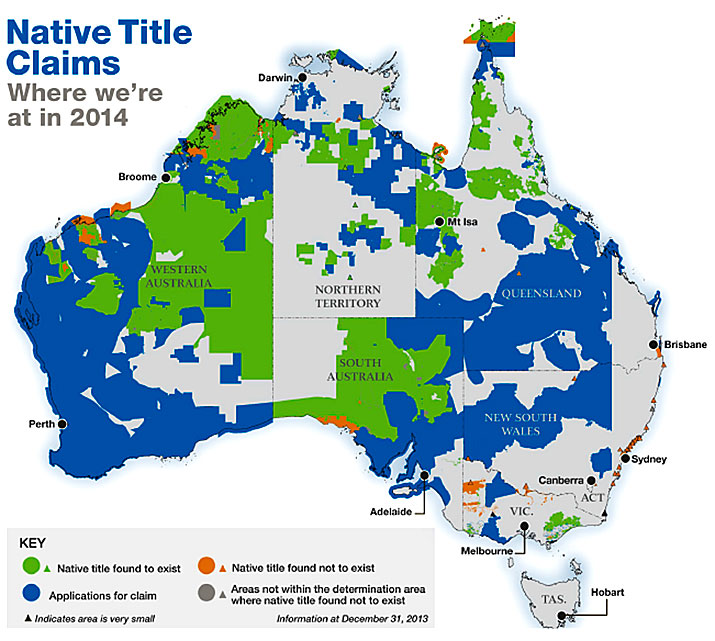
Where native title cannot exist

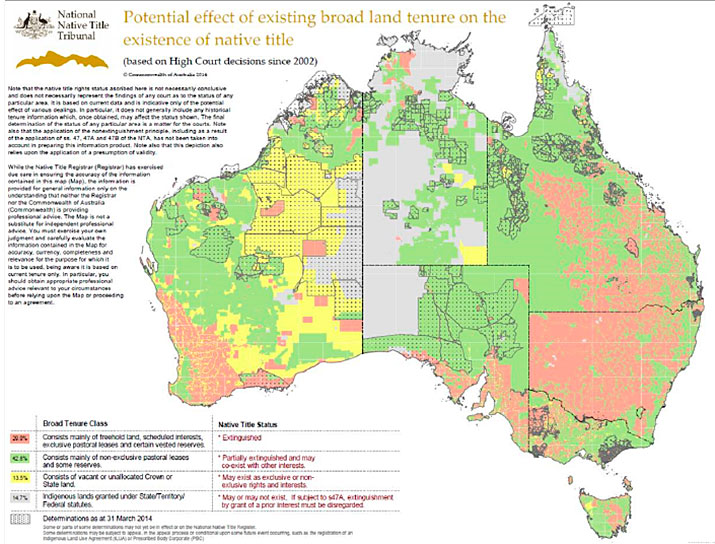
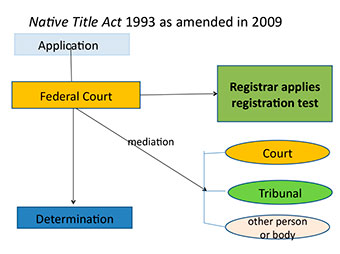 Then followed amendments in 2009 which provided that both the Court and the Tribunal may mediate in respect of an application and, also that another ‘appropriate person or body’ may mediate. The decision as to who should mediate was a matter for the Court.
Then followed amendments in 2009 which provided that both the Court and the Tribunal may mediate in respect of an application and, also that another ‘appropriate person or body’ may mediate. The decision as to who should mediate was a matter for the Court.
The change meant that, rather than automatically referring every case to the Tribunal for mediation, it was for the Court to decide which individual or body should mediate each matter.
Other little discussed amendments in 2009 are those which enable the Court (rather than the President) to direct the Tribunal to hold a native title application inquiry, or refer certain native title issues to the Tribunal for review.
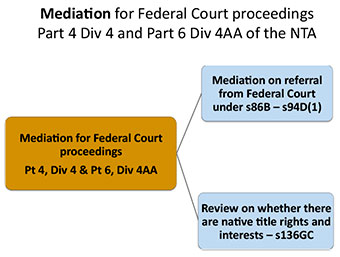 Moving on to the mediation function for Federal Court proceedings:
Moving on to the mediation function for Federal Court proceedings:
It is not the case that the Tribunal can have no role in respect of claims mediation. The gravamen of the amendments is that the Federal Court now has control over the claims process — and can itself decide how mediation will occur.
s 94D(1) is concerned with mediation on referral from Court under s 86B
Reminder that S 86B provides for Court referral of a s 61 application to an appropriate person or body for mediation – note this does not exclude referral to a member of the NNTT
S 94D(2) provides that if mediator is the NNTT, a member must conduct the mediation.
Subject to an order made under s 86B(5C) a person conducting a mediation may be assisted:
If an NNTT member by another member or member of staff of NNTT
In any other case, by such individuals as the person considers appropriate
[S 86B(5C) permits the court to make orders about whether the person who is to conduct the mediation may be assisted by another person]
Review on Whether there are Native Title Rights and Interests
S136GC — provides for referral from the Court for review by the Tribunal of the issue whether a native title claim group who is a party to a proceeding holds native title rights and interests as defined in s 223(1) in relation to land and waters within an area that is the subject of the proceeding:
The referral can be of the Court’s own motion,
or
if it arises in the course of mediation and the mediator requests the Court to refer the issue for review
The mediator must consider the review would assist parties to reach agreement on any of the matters referred to in ss 86A(1)
s 136GE — report to be provided setting out findings (not binding) – consistent with it being a report prepared for mediation
Matters referred to in Native Title Act, s86A(1)
- whether native title exists or existed in the area of the application
- if it exists or existed:
- who holds/held the native title
- the nature, extent and manner of exercise of the native title rights and interests
- the nature and extent of other interests in the area
- the relationship between native title and other interests
- whether the native title rights and interests confer or conferred possession, occupation, use and enjoyment to the exclusion of all others
Native title application inquiries
The Federal Court may direct the Tribunal to hold an inquiry in relation to a matter or an issue relevant to the determination of native title under section 225 (s138B(1))
This step can be taken
(a) by the Court on its own motion; or
(b) at the request of a party to a proceeding; or
(c) at the request of the person conducting the mediation
Native title application report
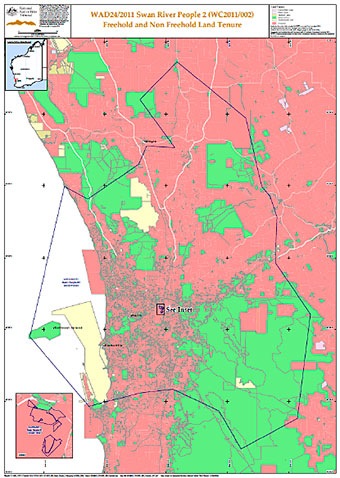 The Tribunal may make recommendations in the report. However, any such recommendations are not binding between any of the parties to the inquiry (s163A)
The rationale of giving the one body, the Federal Court, the control over the over the direction of each case, from start to end, was that the Court could more readily identify the opportunities available to resolve each claim. The new approach was intended to improve the operation of the native title system by encouraging more negotiated settlements of native title claims, and encouraging the Court and parties to find new ways to resolve claims.One of the ways the Court and parties can utilize the Tribunal to assist with the resolution of claims is to refer issues relevant to the determination of native title for inquiry.This could operate somewhat like a referee report in general litigation and could assist in resolving overlaps, and in investigating claim group membership where appropriate, in native title litigation. One of the perceived barriers to use of the Tribunal’s inquiry function is the non-binding nature of recommendations in made in a native title application inquiry report (s 163A) —
Evidence and findings in other proceedings — s86(2)
The Tribunal may make recommendations in the report. However, any such recommendations are not binding between any of the parties to the inquiry (s163A)
The rationale of giving the one body, the Federal Court, the control over the over the direction of each case, from start to end, was that the Court could more readily identify the opportunities available to resolve each claim. The new approach was intended to improve the operation of the native title system by encouraging more negotiated settlements of native title claims, and encouraging the Court and parties to find new ways to resolve claims.One of the ways the Court and parties can utilize the Tribunal to assist with the resolution of claims is to refer issues relevant to the determination of native title for inquiry.This could operate somewhat like a referee report in general litigation and could assist in resolving overlaps, and in investigating claim group membership where appropriate, in native title litigation. One of the perceived barriers to use of the Tribunal’s inquiry function is the non-binding nature of recommendations in made in a native title application inquiry report (s 163A) —
Evidence and findings in other proceedings — s86(2)
Subject to s82(1) the Federal Court:
must consider whether to receive into evidence the transcript of evidence from a native title application inquiry; and
may draw any conclusions of fact from that transcript that it thinks proper; and
may adopt any recommendation, finding, decision or determination of the NNTT in relation to the inquiry
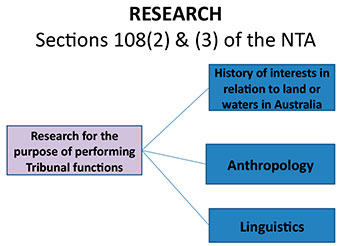 But see s 86(2)
permitting court to:
Draw any conclusions from transcript of evidence from a native title application inquiry
adopt any recommendation of the NNTT in relation to an inquiry.
But see s 86(2)
permitting court to:
Draw any conclusions from transcript of evidence from a native title application inquiry
adopt any recommendation of the NNTT in relation to an inquiry.
The Tribunal may carry out research for the purpose of performing its functions, including into:
The history of interests in relation to land or waters in Australia; or Anthropology; or Linguistics.
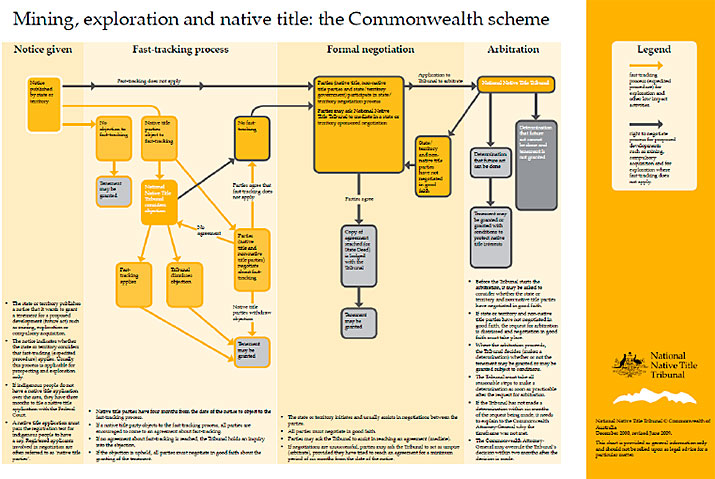
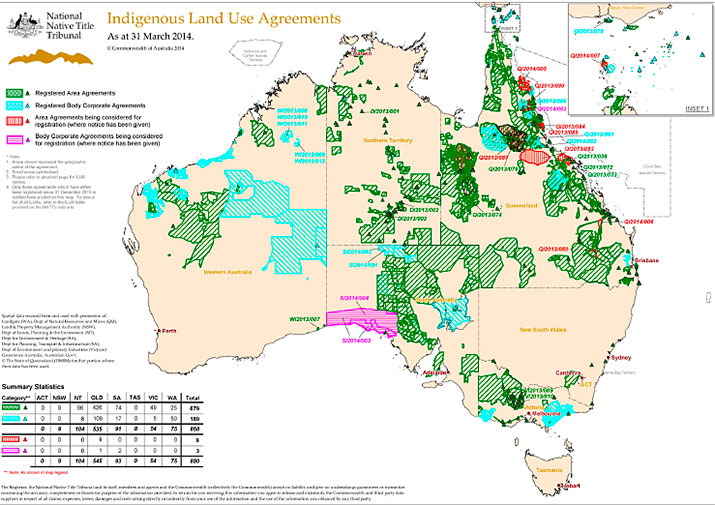
If the Tribunal was exercising all of its functions conferred upon it by the Native Title Act our offices would look something like this.
Under-utilised functions of the NNTT
When practitioners think of the work done by the Tribunal, my best guess that they think of mediation and arbitration of future acts, and possibly facilitating Indigenous Land Use Agreements.
Indeed, when then Attorney-General the Hon Nicola Roxon announced the institutional reforms, she stated that the:
reform refocuses the resources of the Tribunal on its areas of strength, enabling greater focus on crucial functions relating to future land uses affecting native title
But there are many under-utilised, functions of the Tribunal including the inquiry and review functions now under the Court’s direction since the 2009 amendments.
To the best of my knowledge, these functions have never been used by the Tribunal.

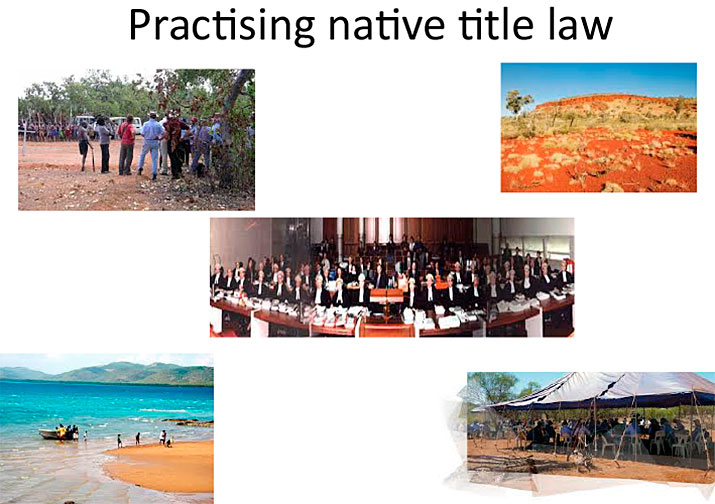

Australian Native Title: References
- **Bartlett R, Native Title in Australia, 2nd ed., Butterworths, Sydney, 2004.
- Native Title News, Loose-leaf service, Butterworths, North Ryde, NSW.
- Strelein L, Compromised Jurisprudence: Native Title Cases since Mabo, 2nd ed., Aboriginal Studies Press, Canberra, 2009.
- Perry M and Lloyd S, Australian Native Title Law, Law Book Company, NSW, 2003.
- ** Refer to the ‘Native Title’ Chapters in the following books:
- McRae H, Nettheim G, Anthony T, Beacroft L, Brennan S, Davis M, Janke T, Indigenous Legal Issues: Commentary and Materials, 4th ed., Thomson Reuters Australia, NSW, 2009.
- Butt P, Land Law, 6th ed., Lawbook Co., Pyrmont, NSW, 2010.
- Webb E & Stephenson MA, Land Law, 3rd ed., LexisNexis Butterworths, Chatswood, NSW, 2009.
Additional readings:
- Secher U, Aboriginal Customary Law: A Source of Common Law Title to Land, Hart Publishing, Oxford, UK, 2014.
- Keon-Cohen B, A Mabo Memoir: Islan Kustom to Native Title, Zemvic Press, Malvern, Victoria, 2013.
- Eades D, Aboriginal Ways of Using English, Aboriginal Studies Press, Canberra, 2013.
- Langton M & Longbottom J (eds.), Community Futures, Legal Architecture: Foundations for Indigenous peoples in the Global Mining Boom, London, Routledge, 2012.
- Bauman T & Glick L (eds.), The Limits of Change: Mabo and Native Title 20 Years On, AIATSIS Research Publications, Canberra, 2012.
- Strelein L (ed.), Dialogue about Land Justice: Papers from the National Native Title Conferences, Aboriginal Studies Press, Canberra, 2010.
- Behrendt L, Cunneen C & Libesman T, Indigenous legal Relations in Australia, Oxford University Press, South Melbourne, Victoria, 2009.
- Ritter D, Contesting Native Title: From Controversy to Consensus in the Struggle over Indigenous Land Rights, Allen & Unwin, NSW, 2009.
- Ritter D, The Native Title Market, UWA Press, Crawley, WA, 2009
- Young S, The Trouble with Tradition: Native Title and Cultural Change, Federation Press, Annandale, NSW, 2008.
- Altman J & Hinkson M (eds.), Coercive Reconciliation: Stabilise, Normalise, Exit Aboriginal Australia, North Carlton, Victoria, Arena Publications, 2007.
- Langton M [et al.], Settling with Indigenous Peoples: Modern Treaty and Agreement-Making, Annandale, NSW, Federation Press, Annandale, NSW, 2006.
- Boer B & Wiffen G, Heritage Law in Australia, South Melbourne, Oxford University Press, 2006.
- Brennan S, Behrendt L, Strelein L & Williams G, Treaty, Federation Press, Annandale, NSW, 2005.
- Russell P H, Recognizing Aboriginal Title: The Mabo Case and Indigenous Resistance to English-Settler Colonialism, University of Toronto Press, Toronto, 2005.
- Langton M [et al.], Honour Among Nations? Treaties and Agreements with Indigenous Peoples, Carlton Victoria, Melbourne University Press, 2004.
- Reynolds, H, The Law of the Land, 3rd ed., Camberwell, Victoria, Penguin, 2003.
- Sutton, P, Native Title in Australia: An Ethnographic Perspective, Cambridge University Press, UK, 2003.
- Butt P, Eagleson R & Lane P, Mabo, Wik and Native Title, 4th ed., Federation Press, Leichhardt, NSW, 2001.
- Mantziaris C & Martin D, Native Title Corporations: A Legal and Anthropological Analysis, Federation Press, Annandale, NSW, 2000.
- Horrigan B & Young S, Commercial Implications of Native Title, Federation Press, Leichhardt, NSW, 1997.
- Hiley G (ed.), The Wik Case:, Issues and Implications, Butterworths, Sydney, 1997.
- Stephenson, M A (ed.), Mabo: The Native Title Legislation, University of Queensland Press, Brisbane, 1995.
- Brennan, F, One land, One Nation: Mabo Towards 2000, University of Queensland Press, Brisbane, 1995.
- Behrendt L, Aboriginal Dispute Resolution, Federation Press, Annandale, NSW, 1995.
- Essays on the Mabo Decision, University of Sydney Law Review, Law Book Company, Sydney, 1993.
- Bartlett R H & Meyers G D, Native Title Legislation in Australia, Centre for Commercial and Resources Law, University of Western Australia and Murdoch University, Western Australia, 1994.
- Stephenson, M A (ed), Mabo: A Judicial Revolution, University of Queensland Press, Brisbane, 1993.
- Neate G, Aboriginal Land Rights Law in the Northern Territory, APCOL, Chippendale, NSW, 1989.
Also see:
- The Australian Indigenous Law Review, Indigenous Law Centre, University of New South Wales Sydney, NSW.
- Halsburys’ Laws of Australia, Butterworths, Sydney, 1991- , Volume 1, “Aboriginals and Torres Strait Islanders – Interests in Land” and “Aboriginal Heritage”.
- The Laws of Australia, Thomson Reuters, Melbourne, 1993-, Volume 1, “Aborigines and Torres Strait Islanders”.
Useful Websites:





 May 1982
May 1982 
 The decision was attacked by some commentators as being a High Court “adventure”.
The decision was attacked by some commentators as being a High Court “adventure”. The Native Title Act 1993 was part of the Commonwealth Government’s response to the 1992 Mabo decision.
The Native Title Act 1993 was part of the Commonwealth Government’s response to the 1992 Mabo decision. 




 Then followed amendments in 2009 which provided that both the Court and the Tribunal may mediate in respect of an application and, also that another ‘appropriate person or body’ may mediate. The decision as to who should mediate was a matter for the Court.
Then followed amendments in 2009 which provided that both the Court and the Tribunal may mediate in respect of an application and, also that another ‘appropriate person or body’ may mediate. The decision as to who should mediate was a matter for the Court. Moving on to the mediation function for Federal Court proceedings:
Moving on to the mediation function for Federal Court proceedings:  The Tribunal may make recommendations in the report. However, any such recommendations are not binding between any of the parties to the inquiry (s163A)
The rationale of giving the one body, the Federal Court, the control over the over the direction of each case, from start to end, was that the Court could more readily identify the opportunities available to resolve each claim. The new approach was intended to improve the operation of the native title system by encouraging more negotiated settlements of native title claims, and encouraging the Court and parties to find new ways to resolve claims.One of the ways the Court and parties can utilize the Tribunal to assist with the resolution of claims is to refer issues relevant to the determination of native title for inquiry.This could operate somewhat like a referee report in general litigation and could assist in resolving overlaps, and in investigating claim group membership where appropriate, in native title litigation. One of the perceived barriers to use of the Tribunal’s inquiry function is the non-binding nature of recommendations in made in a native title application inquiry report (s 163A) —
Evidence and findings in other proceedings — s86(2)
The Tribunal may make recommendations in the report. However, any such recommendations are not binding between any of the parties to the inquiry (s163A)
The rationale of giving the one body, the Federal Court, the control over the over the direction of each case, from start to end, was that the Court could more readily identify the opportunities available to resolve each claim. The new approach was intended to improve the operation of the native title system by encouraging more negotiated settlements of native title claims, and encouraging the Court and parties to find new ways to resolve claims.One of the ways the Court and parties can utilize the Tribunal to assist with the resolution of claims is to refer issues relevant to the determination of native title for inquiry.This could operate somewhat like a referee report in general litigation and could assist in resolving overlaps, and in investigating claim group membership where appropriate, in native title litigation. One of the perceived barriers to use of the Tribunal’s inquiry function is the non-binding nature of recommendations in made in a native title application inquiry report (s 163A) —
Evidence and findings in other proceedings — s86(2) But see s 86(2)
permitting court to:
Draw any conclusions from transcript of evidence from a native title application inquiry
adopt any recommendation of the NNTT in relation to an inquiry.
But see s 86(2)
permitting court to:
Draw any conclusions from transcript of evidence from a native title application inquiry
adopt any recommendation of the NNTT in relation to an inquiry.



